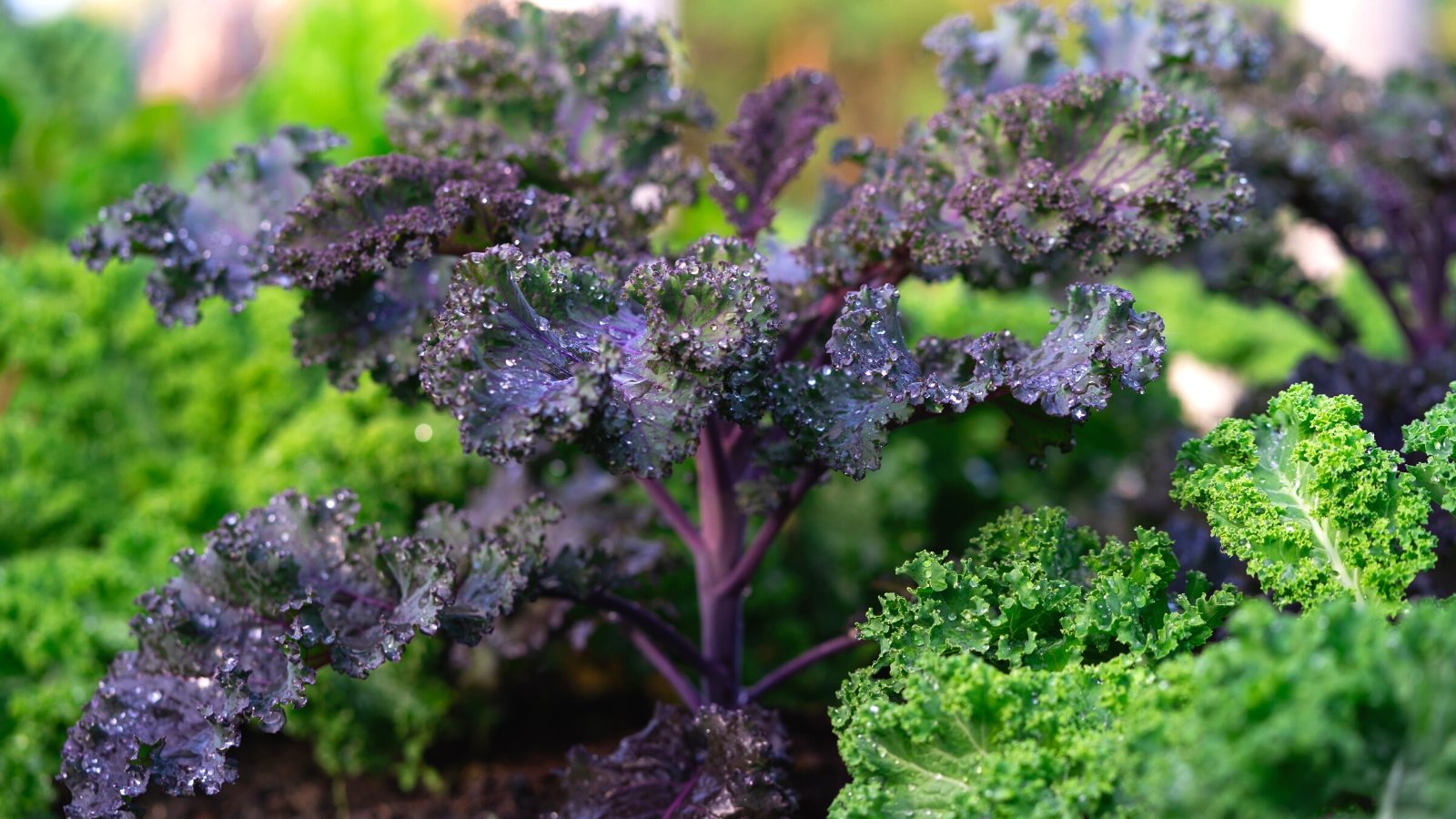The best way we develop meals has modified considerably over time, even for dwelling gardeners. We’re paying extra consideration to what we develop and the way that impacts the surroundings round us. If you happen to’re searching for a singular option to develop produce that’s each low-maintenance and environmentally pleasant, meals forests are the reply.
Establishing a meals forest shouldn’t be a easy weekend venture. However these mini ecosystems can ship plenty of produce every year with little to no consideration as soon as established, making the startup work nicely well worth the effort.
What’s a Meals Forest?


The time period ‘meals forest’ appears fairly self-explanatory, however there may be extra to the idea than meets the attention.
- Advertisement -
Briefly, meals forests are sustainable, edible ecosystems designed to match the variety and steadiness of a pure forest. That’s simpler mentioned than finished, because the steadiness and capabilities of a forest evolve over many years or centuries – time we don’t have in our backyards. However with a bit of information, we will create a productive ecosystem designed to ship an abundance of meals with out a lot intervention.
The idea of meals forests begins with Robert Hart, an vital determine in permaculture. Captivated with rising his personal produce, largely following a uncooked meals food plan, he struggled with the labor-intensive nature of conventional farming. So as an alternative, Hart – impressed by his dedication to well being, wellness, and sustainability – began the primary fashionable meals forest on his farm within the Eighties.
With this experiment (and now proof of idea), he hoped to mix ‘optimistic gardening and optimistic well being.’
Meals forests are designed to emulate the layered complexity and self-sustaining nature of untamed forests however with predominantly edible vegetation. Vegetation are organized in layers, from tall timber to the bottom cowl, with every layer having its personal position and a special group of edible vegetation to select from. This layered strategy is what ensures the ‘backyard’ largely takes care of itself as soon as it’s established.
One of many main advantages of meals forests is that they’re designed to wish much less work from us. There may be extra planning and time funding up entrance, however when you get the steadiness proper, you’ll be able to harvest out of your backyard yr after yr with little consideration. Not like conventional vegetable gardens that require frequent weeding, watering, and feeding, meals forests are supposed to develop naturally.
- Advertisement -
The Advantages of Meals Forests
Constructing a meals forest or a permaculture backyard shouldn’t be a small enterprise. Many gardeners marvel if it’s well worth the funding and time it takes to get it proper. However like all funding, the rewards you obtain on the finish are superb.
Huge Yield in a Small House


Meals forests can produce a formidable quantity of produce in a small space. Due to their layered design, you’ll be able to develop all kinds of meals shut collectively, making certain variety in each your backyard and your food plan. Issues like row spacing and crop rotation are a lot much less of a priority as soon as the forest you’ve designed turns into balanced.
Decrease Upkeep


After the preliminary setup (which admittedly takes a couple of years), meals forests require surprisingly little work. The purpose of a balanced and ‘pure’ meals forest is that when the suitable ecosystem is achieved, the forest begins to care for itself.
This implies far much less weeding, watering, and normal maintenance whereas nonetheless delivering loads of produce for harvesting.
Environmental Profit


Meals forests will not be simply good for us. They’re good for the planet, too. The strategies used to construct and preserve a meals forest contribute to higher soil well being and a extra various ecosystem, making your backyard much more sustainable in the long term. In addition they enhance air high quality and present a house for native wildlife in your space, particularly when native edibles are planted.
Bettering Soil


Few gardeners I’ve met get enthusiastic about soil well being. However for people who do, you’ll love meals forests. Some conventional gardening practices can take a toll on the soil, requiring maintenance from us over time to spice up well being.
However meals forests work naturally to revive and preserve the soil, as you’d discover in pure forest flooring recognized for having wealthy, wholesome soil. Natural matter like fallen leaves and branches retains the soil fertile and lively.
Well being


Rising your personal produce is extensively recognized to enhance well being, significantly if you’re rising a various vary of meals as you’d in a meals forest. However the well being advantages transcend the kitchen, too.
Bodily train is one element, significantly within the early years of forest gardening. Strolling amongst your timber and vegetation may decrease stress and enhance temper, boosting psychological well being.
Aesthetics


Lastly, you’ll be able to’t overlook in regards to the aesthetic advantages. All of us need our gardens to be a area of magnificence and delight, and also you actually get that together with your very personal forest proper in your yard.
Irrespective of the scale, there may be all the time one thing distinctive to have a look at or a brand new plant relationship to discover and watch develop. The elevated wildlife exercise additionally provides a buzz to your yard.
How To Construct A Meals Forest
When you’ve determined a meals forest is for you, there are a couple of steps to finish earlier than you get to get pleasure from your harvest, from planning to planting and past.
Step 1: Select Your Location


Begin by figuring out the place roughly you want to your meals forest to be. Larger areas are barely simpler to work with, contemplating the mature dimension of the timber, however you’ll be able to create a mini-forest ecosystem in smaller gardens, too.
Search for a area that will get loads of daylight. Additionally, contemplate the soil you’re beginning with and the place water naturally collects in your backyard after rain. Purpose for a spot that received’t turn into waterlogged simply to forestall points with illness.
Step 2: Verify Your Soil


Soil well being is important for a profitable meals forest. Earlier than you plant something, take a while to evaluate your soil’s high quality. Forests are recognized for his or her nutrient-rich, moisture-retaining soil, and your meals forest shouldn’t be any completely different. As soon as you already know what you’re working with, you’ll be able to enrich the soil naturally earlier than you begin to enhance situations.
Use natural matter like compost or a thick layer of mulch to interrupt down over time, replicating how forests construct soil naturally. These amendments assist enhance soil fertility and construction and encourage useful microorganisms that help plant development. Water the realm nicely after making use of mulch to assist it break down and combine into the soil.
Step 3: Select Your Vegetation
Now comes probably the most thrilling half—selecting your vegetation. A typical meals forest consists of seven layers, with every one taking part in an element in creating a various and productive backyard. All it is advisable do is select edible vegetation appropriate for every layer that may recognize the forest situations you create.
When deciding on vegetation, I all the time advocate excited about what you wish to eat first, as you don’t need your produce to go to waste. Additionally, contemplate what grows nicely in your space, in addition to produce that shall be accessible all through the seasons for steady harvests.
Selecting vegetation to your meals forest includes planning for every of the seven layers. If you happen to’re utilizing a smaller area, you’ll be able to take away some layers (just like the taller cover timber) so long as you regulate for the impact this can have on the steadiness of the forest.
Cover


The highest layer is made up of the most important timber. These ought to be primarily nut or fruit timber that may present shade and construction to your forest. Ensure these timber are well-spaced to permit daylight to succeed in the decrease layers:
Understory


Smaller fruit timber thrive within the partial shade of the cover layer. These ought to be planted in gaps so that they get sufficient mild whereas nonetheless being protected by the cover:
- Plums
- Pears
- Apples
- Avocados
Shrubs


Largely berry bushes and different fruiting shrubs that may tolerate some shade. They supply fruits and appeal to useful bugs for pollination.
- Blueberry
- Raspberry
- Elderberry
Herbaceous Vegetation


Perennial and annual vegetation provide quite a lot of makes use of. This layer accommodates most greens, in addition to vegetation to assist deter pests and enhance soil well being:
- Kale
- Basil
- Parsley
- Echinacea
Rhizosphere


Vegetation on this layer are grown for his or her roots, which might break up the soil and assist aerate it. These root crops might be harvested with out disturbing the system an excessive amount of:
Floor Covers


Low-growing vegetation that unfold throughout the soil, serving to to retain moisture and suppress weeds. Floor covers are essential for protecting the soil wholesome and stopping erosion:
Climbers


Climbing vegetation that may develop up timber to make the most of vertical area, maximizing the productiveness of your forest:
- Ardour fruit
- Beans
- Grapes
- Cucumbers
Step 4: Plant In Levels


It’s best to plant your meals forest in levels to offer the layers time to ascertain since they develop at completely different charges. Begin with the bigger timber and shrubs, as they’ll kind the construction of your forest.
Then, steadily introduce the smaller vegetation and floor covers. This staggered strategy helps cut back competitors for daylight and vitamins, permitting all of your vegetation to thrive.
Step 5: Upkeep


Despite the fact that a meals forest is designed to be low-maintenance, some consideration is required within the early years to make sure its success:
- Watering: Younger vegetation want common watering till they’re well-established. Because the forest matures, its mulch and cover will assist retain moisture, lowering the necessity for further watering from you.
- Mulching: Whereas your forest will finally create its personal pure mulch, you could have to mulch the soil your self within the first few years. Apply in thick layers to slowly break down into the soil.
- Pruning: Pruning helps handle development early on, enhance air circulation, and enhance fruit manufacturing. Make use of a chop-and-drop strategy, leaving any branches you take away the place they land to interrupt down naturally.
- Weeding: Within the preliminary levels, you could have to weed round your younger vegetation to scale back competitors. As your meals forest grows, the necessity for weeding will lower as floor cowl and mulch suppress weed development.
- Statement: Recurrently strolling by your meals forest and observing the modifications and interactions can present insights into its productiveness. Make changes as wanted, resembling including extra mulch, introducing new plant species, or adjusting plant placements based mostly on development patterns and daylight availability.
Closing Ideas
A meals forest shouldn’t be an in a single day venture. It takes time for the ecosystem to steadiness and for vegetation to mature. Be affected person and let nature do its work. Your forest will change and evolve, however the time spent ready shall be price it ultimately.





